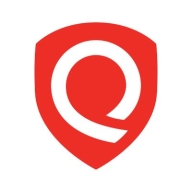

Red Hat Advanced Cluster Security for Kubernetes and Qualys TotalCloud are security solutions tailored for cloud environments. Red Hat is noted for its support and pricing, while Qualys TotalCloud is valued for its features.
Features:Red Hat Advanced Cluster Security for Kubernetes includes robust security measures, real-time threat detection, and compliance automation, while Qualys TotalCloud offers comprehensive cloud security, detailed vulnerability management, and broad container security options with extensive security analytics.
Room for Improvement:Red Hat Advanced Cluster Security for Kubernetes could enhance user experience consistency and extend scalability features. Qualys TotalCloud users desire faster performance and better integration with existing tools and platforms.
Ease of Deployment and Customer Service:Red Hat Advanced Cluster Security for Kubernetes is noted for its straightforward deployment and responsive customer service. Qualys TotalCloud receives mixed reviews on setup complexity but provides good customer service.
Pricing and ROI:Red Hat Advanced Cluster Security for Kubernetes is competitively priced with good return on investment. Qualys TotalCloud is more expensive but seen as valuable due to extensive features, justifying its cost.
| Product | Market Share (%) |
|---|---|
| Qualys TotalCloud | 1.1% |
| Red Hat Advanced Cluster Security for Kubernetes | 2.2% |
| Other | 96.7% |


| Company Size | Count |
|---|---|
| Small Business | 7 |
| Midsize Enterprise | 2 |
| Large Enterprise | 22 |
| Company Size | Count |
|---|---|
| Small Business | 6 |
| Midsize Enterprise | 2 |
| Large Enterprise | 4 |
TotalCloud is the Qualys approach to Cloud Native Application Protection Platform (CNAPP) for cloud infrastructure and SaaS environments. With TotalCloud, customers extend TruRisk insights (transparent cyber risk scoring methodology) from the Qualys Enterprise TruRisk Platform to their cloud environments allowing for a seamless unified view of cyber risk across on-prem, hybrid, and multi-cloud environments.
Features and capabilities of Qualys TotalCloud include, but are not limited to:
Discover: Complete visibility and insights into cyber-risk exposure across multi-cloud. Continuously discover and monitor all your workloads across a multi-cloud environment for a 360-degree view of your cloud footprint. Identify known and previously unknown internet-facing assets for 100% visibility and tracking of risks.
Assess: Comprehensive cloud-native assessments with FlexScanTM. Extensive scanning capabilities with Qualys FlexScan, including no-touch, agentless, API- and snapshot-based scanning, along with agent- and network-based scanning for in-depth assessment. Use these multiple scanning methods to scan a workload to get a unified and comprehensive view of vulnerabilities and misconfigurations.
Prioritize: Unified security view to prioritize cloud risk with TruRiskTM. Experience a unified risk-based view of cloud security with insights across workloads, services, and resources. Qualys TruRisk quantifies security risk by workload criticality and vulnerabilities; it correlates with ransomware, malware, and exploitation threat intelligence to prioritize, trace, and reduce risk.
Defend: Real-time protection against evolving and unknown threats with InstaProtectTM. Qualys enables continuous monitoring of all cloud assets to ensure they are protected against threats and attacks at runtime. Qualys keeps your cloud runtime safe by detecting known and unknown threats across the entire kill chain in near real-time across a multi-cloud environment.
Remediate: Fast remediation with QFlow – no code, drag-and-drop workflows. The integration of QFlow technology into Qualys TotalCloud saves security and DevOps teams valuable time and resources. Automation and no-code, drag-and-drop workflows help simplify the time-consuming operational tasks of assessing vulnerabilities on ephemeral cloud assets, alerting on high-priority threats, remediating misconfigurations, and quarantining high-risk assets.
Red Hat Advanced Cluster Security for Kubernetes is a Kubernetes-native container security solution that enables your organization to more securely build, deploy, and run cloud-native applications from anywhere. With its built-in security across the entire software development life cycle, you can lower your operational costs, reduce operational risk, and increase developer productivity while improving your security posture immediately. In addition, Red Hat Advanced Cluster Security integrates with security tools and DevOps in an effort to help you mitigate threats and enforce security policies that minimize operational risk to your applications. It also enables you to provide developers with actionable, context-rich guidelines integrated into existing workflows, along with tooling to support developer productivity. The solution is suitable for small, medium, and large-sized companies.
Red Hat Advanced Cluster Security for Kubernetes Features
Red Hat Advanced Cluster Security for Kubernetes has many valuable key features. Some of the most useful ones include:
Red Hat Advanced Cluster Security for Kubernetes Benefits
There are many benefits to implementing Red Hat Advanced Cluster Security for Kubernetes. Some of the biggest advantages the solution offers include:
Reviews from Real Users
PeerSpot user Igor K., Owner/Full Stack Software Engineer at Maraphonic, Inc., says, “The solution allows teams to create their own virtual spaces and share resources. The most valuable feature is the ability to share resources.”
We monitor all Container Security reviews to prevent fraudulent reviews and keep review quality high. We do not post reviews by company employees or direct competitors. We validate each review for authenticity via cross-reference with LinkedIn, and personal follow-up with the reviewer when necessary.